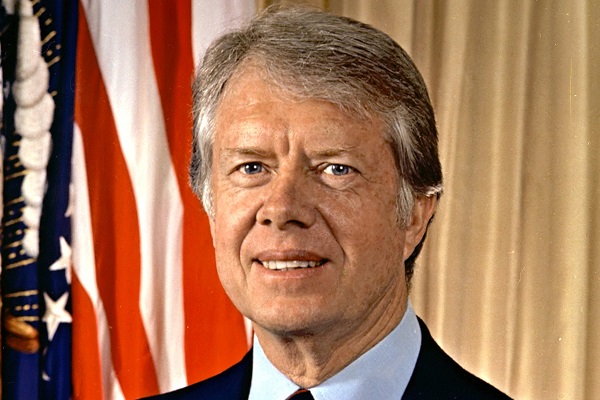EarthTalk®
From the Editors of E – The Environmental Magazine

Jimmy Carter’s protection of vast swaths of Alaska before leaving office will remain one of the greatest conservation moves by any president in U.S. history.
Dear EarthTalk: What is former president Jimmy Carter’s environmental legacy? – A.J., via email
Standing at the presidential lectern, in front of what looked like a series of oversized plastic deckchairs, Jimmy Carter prophesied that “[a] generation from now, this solar heater can be a curiosity, a museum piece, an example of a road not taken, or it can be a small part of one of the greatest and most exciting adventures ever undertaken by the American people.”
The year was 1979, and then-President Carter was talking about the environmental imperative of weaning America from its dependency on non-renewable energy, much of which was being imported from abroad.
During his presidency, Carter amassed an impressive number of conservation achievements. He more than doubled the area conserved under the National Parks System and added 104 million acres to Alaska’s protected land areas—over 57 million of which were named ‘wilderness’ zones and safeguarded under the highest level of federal protection.
More Than Just Parks, an organization for the protection of nature conservation, named this “the single greatest protection of public lands in our nation’s history.”
In the first year of his presidency, Carter signed the Surface Mining Control and Reclamation Act which banned mining in national parks.
Previously, as Georgia’s governor, he vetoed the building of a dam on the Flint River, which would have flooded scenic valleys and threatened native Cahaba Lily and Shoal Bass which thrived on its banks.
As President, he would go on to veto 16 similar water reclamation projects.
The wins Carter scored for the environment have helped him go down as one of the greenest presidents in history. But after a series of eco-unfriendly presidents, what remains of his environmental legacy today?
For one, the solar panels that held such symbolic weight have indeed become “museum pieces” after his successor in the White House, Ronald Reagan, dismantled them in 1986.
The panels are shared between the Smithsonian Museum, the Carter Library and the Science and Technology Museum in China.
Carter’s panels, along with his mission to move America’s energy consumption to 20 percent renewables by 2000, have been significantly downgraded.
Since Carter left office in 1980, his Alaskan conservation work has also come under threat.
A Trump-era trading of public lands granted permission for a commercial road to be built across the Izembek National Wildlife Refuge, one of the zones protected under Carter’s extension of the national park system during his presidency.
With petitions from Carter and other environmentalists, the decision has since been overturned. The incident remains, however, a pressing reminder of the fragility of conservation wins.
“He showed us what it means to be a public servant, with emphasis on servant,” Joe Biden said, and as Carter’s legacy ages, and the climate crisis continues to rage, it will be interesting to see how his environmental advocacy continues to influence U.S. leaders. The green legacy of Jimmy Carter is vast and important but, like the American landscapes he championed, it is in need of protection.
CONTACTS:
More Than Just Parks, https://morethanjustparks.com/jimmy-carter-americas-greenest-president
Georgia Conservancy, https://www.georgiaconservancy.org/president-carter-environmental-legacy
Yale Climate Connections, https://yaleclimateconnections.org/2023/02/the-forgotten-story-of-jimmy-carters-white-house-solar-panels
EarthTalk® is produced by Roddy Scheer & Doug Moss for the 501(c)3 nonprofit EarthTalk.
See more at https://emagazine.com
To donate, visit https://earthtalk.org
Send questions to: question@earthtalk.org
